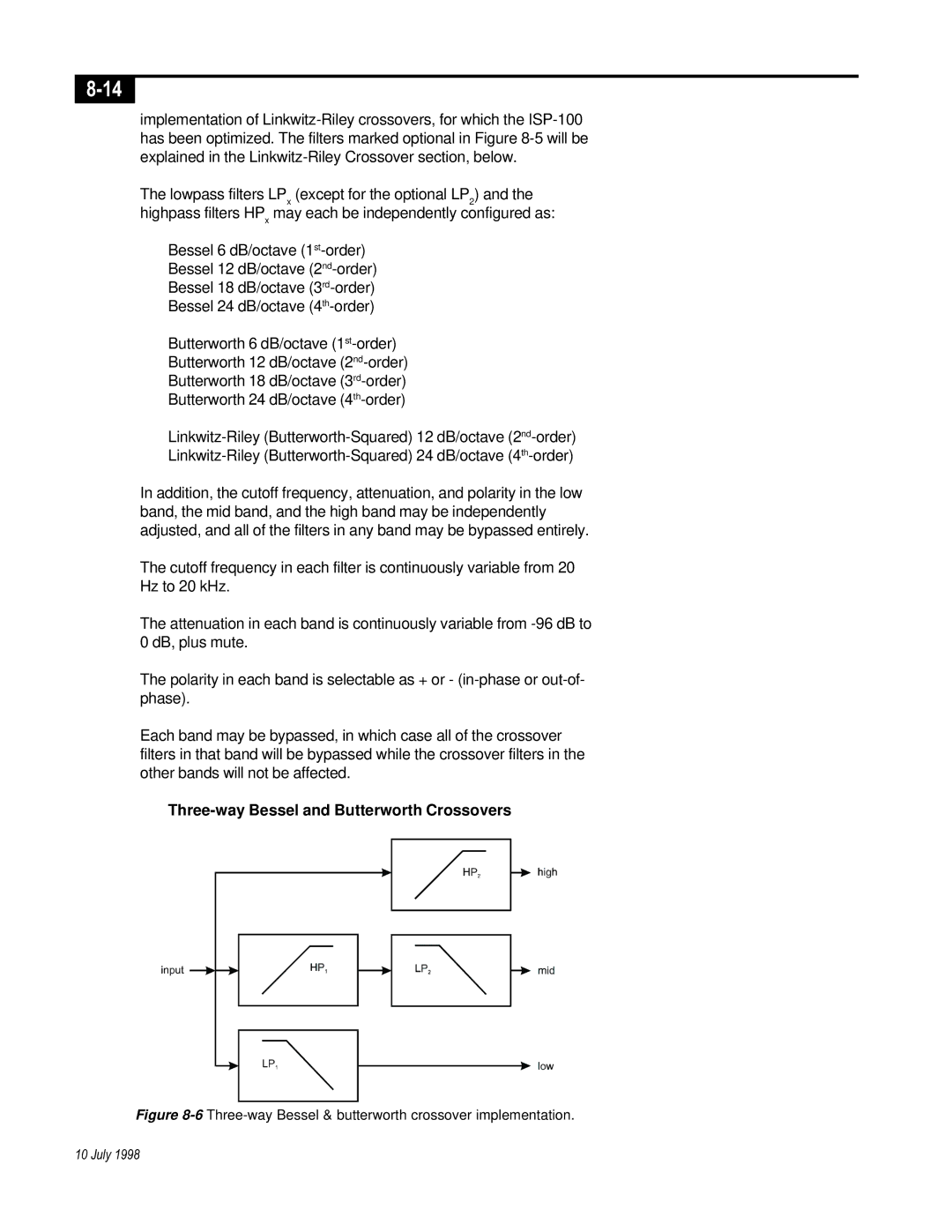
implementation of
The lowpass filters LPx (except for the optional LP2) and the highpass filters HPx may each be independently configured as:
Bessel 6 dB/octave
Bessel 12 dB/octave
Bessel 18 dB/octave
Bessel 24 dB/octave
Butterworth 6 dB/octave
Butterworth 12 dB/octave
Butterworth 18 dB/octave
Butterworth 24 dB/octave
In addition, the cutoff frequency, attenuation, and polarity in the low band, the mid band, and the high band may be independently adjusted, and all of the filters in any band may be bypassed entirely.
The cutoff frequency in each filter is continuously variable from 20 Hz to 20 kHz.
The attenuation in each band is continuously variable from
The polarity in each band is selectable as + or -
Each band may be bypassed, in which case all of the crossover filters in that band will be bypassed while the crossover filters in the other bands will not be affected.
